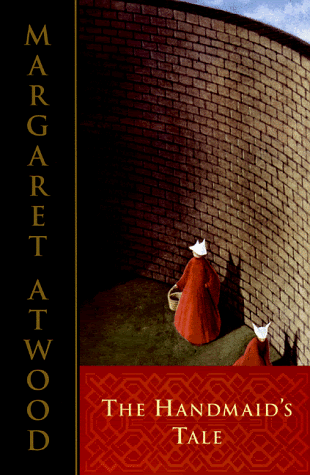When I was a boy I used to read Commando comics and others of the type. I loved them. As I got older I still read them but I went through an ironic phase, noting the stock characters, (the cowardly private, the good German, the evil Jap, the stuffy officer, the renegade soldier, the younger son looking for redemption and so on and on), unlikely dialogue (‘You may be faster than us Fritz, but we’ll out turn you any day’ thus neatly giving us technical information about the relative performances of the ME109 and the Hurricane in naturalistic dialogue during a dogfight), formulaic plots, and characters that all looked the same, and then finally I stopped reading them altogether.
That said, their level of technical drawing in Commando comics was never less than superb which was a large part of their appeal to boys who made models of airplanes, ships and tanks, and played war in the playground. If the stories were Boys’s Own Adventure types and they never caused us to reflect on the futility of war, a) we were little boys who, quite rightly, hadn’t yet got around to considering the great moral questions and b) they were set in World War Two which is as near to a simple goodies versus baddies war as you’re likely to find.
As comics have gained more respectability as a literary form, Commando Comics have released big albums of their books. Each volume has twelve stories with a nominal theme, (Aussies!, Action! Spies! Etc – the exclamation marks are mandatory) are larger print than their original incarnation, and come with a handy attached bookmark. I’ve worked my way through two volumes now, one just recently and one a year or two ago, and I’m afraid my ironic teenage self was right. While they are aware of their own excesses, (their covers note things such as Europeans always screaming “Aaaauggh!” while Indians and Asians tend towards “Aieee!”) in the end they are poorly told stories (albeit sometimes with a good premise) and cluttered with clichés. On top of that the larger print makes these books unwieldy and subject to breakage. I can’t recommend these books except as an exercise in nostalgia, which, in their defence, is where they seem to be aimed. But nostalgia can be very powerful. I can’t remember if it was a British or German officer, but my brothers and I still giggle when we think of this piece of deathless narration: ‘He went quietly mad.’
 From the ridiculous to the sublime: Margaret Atwood’s The Handmaid’s Tale. This is the second of Atwood’s novels I’ve had the pleasure to read and she has the happy knack, unusual for a literary novelist who has won the Booker Prize among others, of writing page-turners. The Handmaid’s Tale takes place in a dystoptic world of a theocratic patriach totalitarian society in a constant war and suffering from falling fertility rates. The narrator is a Handmaid known only by her patronymic Offred, one of those whose job, and indeed sole purpose now, is to get pregnant to one of the society’s top strata’s male. If they do so, their life is safe; if not they could end up in exile or disappeared.
From the ridiculous to the sublime: Margaret Atwood’s The Handmaid’s Tale. This is the second of Atwood’s novels I’ve had the pleasure to read and she has the happy knack, unusual for a literary novelist who has won the Booker Prize among others, of writing page-turners. The Handmaid’s Tale takes place in a dystoptic world of a theocratic patriach totalitarian society in a constant war and suffering from falling fertility rates. The narrator is a Handmaid known only by her patronymic Offred, one of those whose job, and indeed sole purpose now, is to get pregnant to one of the society’s top strata’s male. If they do so, their life is safe; if not they could end up in exile or disappeared.
We hear the story in Offred's voice. We hear the details of her life, the prescribed dress, living conditions, social life, even the regimented sex. We also get some information on her backstory, her marriage, her daughter, and how all this was stripped away from her with a brutal speed as the world was turned upside down. And the ending is ambiguous without being weak story-telling - a difficult trick to pull off.
Atwood has created a believable world with real affecting characters. Tim Blair, a right-wing Australian columnist, has invented Blair’s Law, “the ongoing process by which the world's multiple idiocies are becoming one giant, useless force". While in this case, it was two extreme groups coming together quite effectively to overthrow democracy. The Handmaid’s world seems to be a bizarre result of religious fundamentalism fusing with radical feminism to create the society where women are simultaneously held in great esteem and confined to predetermined traditional roles without chance of change or escape except for the worse. The men too are trapped in strict strata. Perhaps it’s more as Clint Eastwood put it: “If you go far enough to the right, you’ll meet the same idiots coming from the left.”
It’s a superb novel. Once again I found myself torn between trying to find out what happens, and wanting the novel to last longer. Perhaps it’s not a novel you enjoy, but it stays with you. And it's certainly made its mark culturally, having been adapted both as a film and an opera. It was Francis Trauffaut who said a masterpiece is something that has already found its definitive form. And so with this, as with other masterworks, it is best encountered in its original form. To be honest, I can only assume this, having seen neither the film nor opera. But I think it's a fairly safe truism that only second-rate novels make better films. Perhaps we have the odd exception (I understand both the play and opera of The Marriage of Figaro hold their place on stage) but go with me on this one.

Nick, I used to trade ('swap' as we called it then) all kinds of comics with the other kids in the street - all boys at the time. It was here I learned about WWII, the power of non-verbals ('Aieee!' 'Aauuuggh!'), the exclamation point, and dynamic composition frame by frame. I also loved Phantom comics and got a Phantom ring which had red, ruby eyes. Yeah! Wish I hadn't lost it along the way.
ReplyDeleteYou know the Sandman 'graphic novels' (posh !!!) don't you?
Have never read The Handmaid's Tale. It's now on the list.
Colour me jealous on your ownership of a Phantom ring!
ReplyDelete